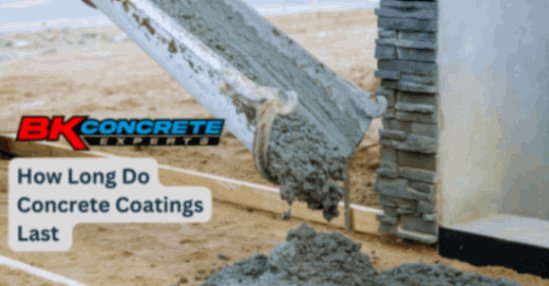Maintaining a concrete pool deck is essential for both aesthetics and safety. Over time, concrete pool decks may develop cracks due to weather changes, ground movement, or simple wear and tear. Repairing these cracks promptly prevents further degradation of the surface, which could lead to more extensive and expensive repairs. For homeowners, DIY repair kits and comprehensive tutorials offer a cost-effective solution, allowing for the swift restoration of the pool deck’s appearance and functionality.
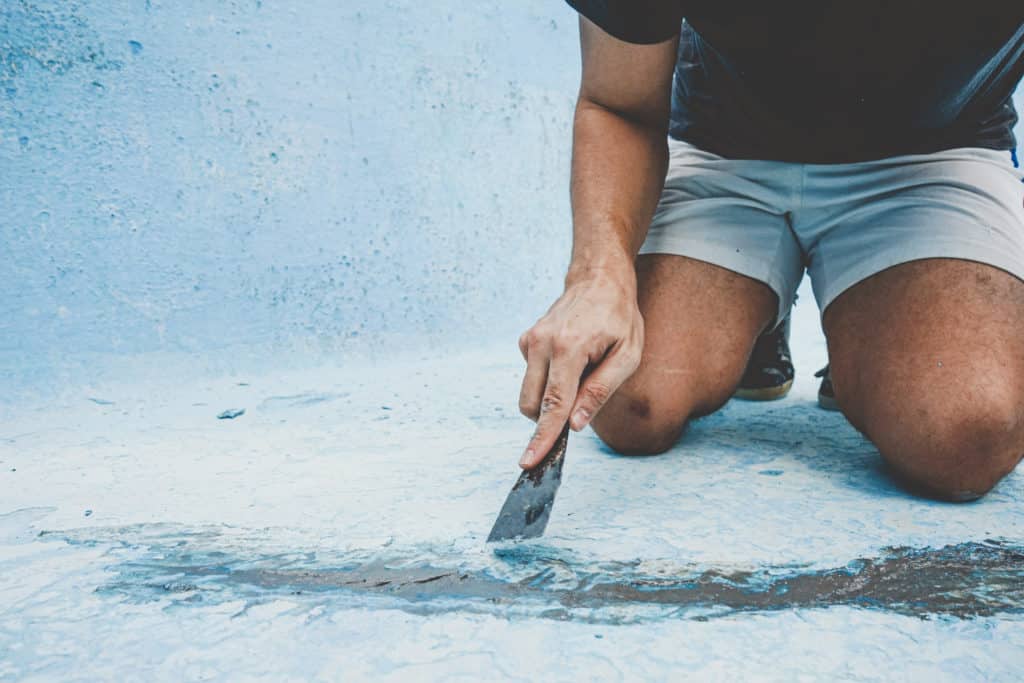
Professionals in the field offer services for more significant damage, ensuring a thorough and long-lasting repair. Preparation is key in any repair process; it involves cleaning the area, removing loose pieces of concrete, and ensuring the surface is ready to bond with the repair materials. Whether one chooses to self-repair or hire a professional, understanding the steps involved in concrete pool deck repair helps maintain the integrity of the pool area and extend the life of the deck.
Identifying Pool Deck Damage
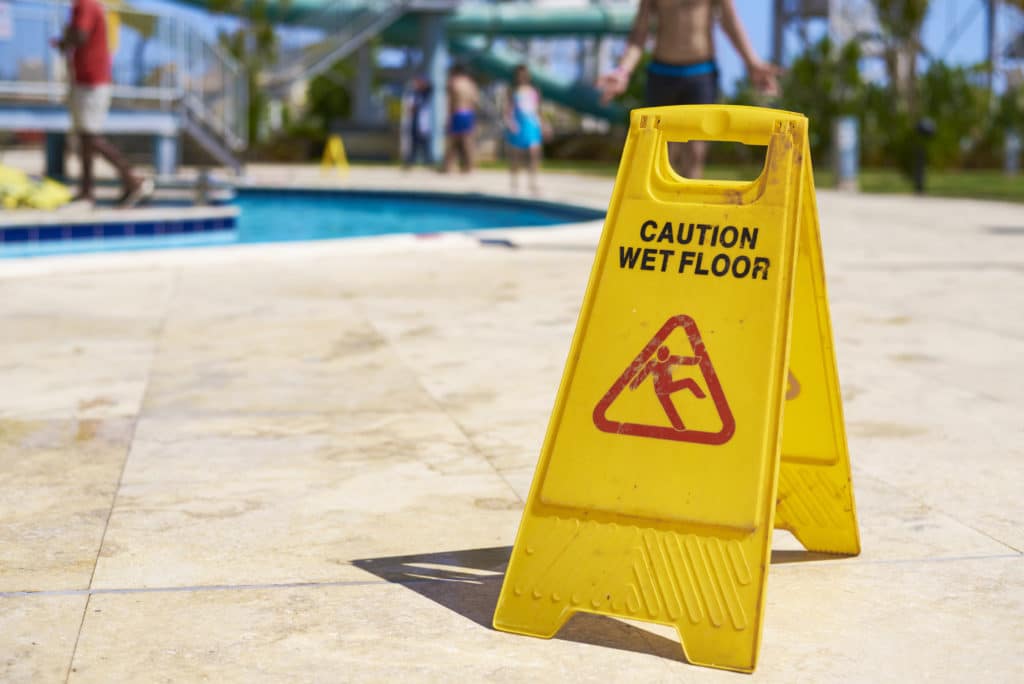
Identifying damage on a concrete pool deck is crucial to maintaining the safety and longevity of the pool area. By assessing the types of cracks and locating potential structural issues, one can address problems before they worsen.
Assessing Crack Types
Hairline Cracks: These are thin superficial lines that may appear on the surface of the concrete pool deck. While they often do not indicate severe damage, they can become gateways for water to seep in and cause further deterioration.
Gaps and Large Cracks: More substantial cracks or gaps in the pool deck can signal significant issues. These types of cracks might be wide enough to allow water penetration, leading to potential freeze-thaw damage in colder climates.
Locating Structural Issues
Spalling: This describes areas where the concrete begins to flake or chip away, often exposing the underlying material. Spalling is caused by moisture intrusion or the rebar corroding within the concrete.
Discoloration: Changes in color can indicate areas of damage or wear. Persistent discoloration could suggest water pooling beneath the surface, potentially leading to more serious structural issues.
The examination of a pool deck should be methodical, looking for signs of cracks, spalling, gaps, and discoloration to effectively gauge the extent of damage. Addressing these issues promptly can help preserve the integrity of the concrete pool deck.
Cleaning and Preparation
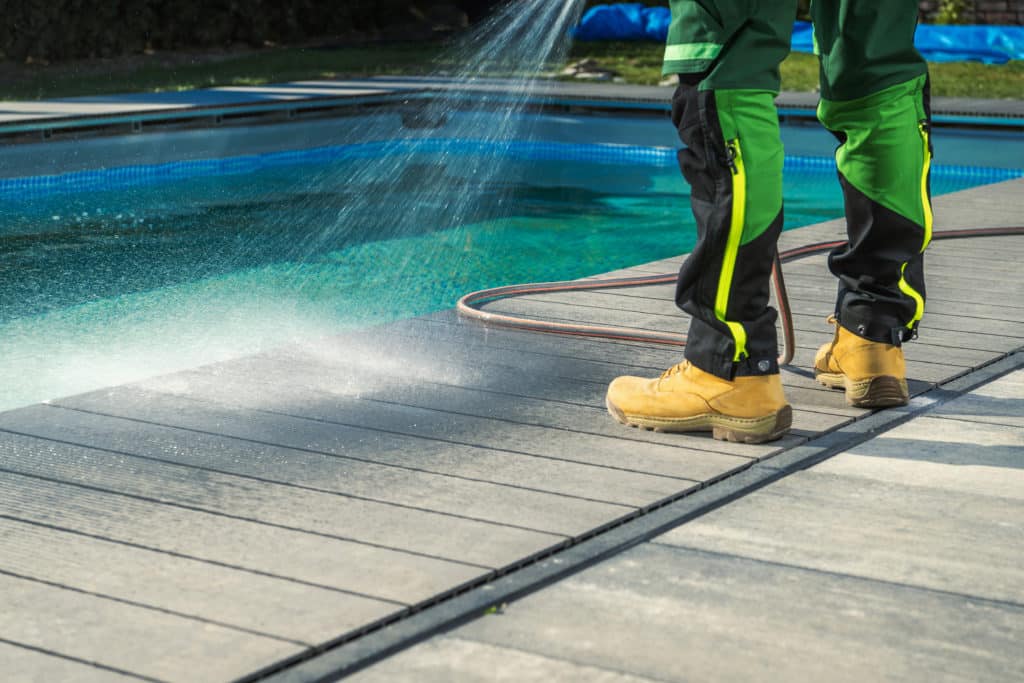
Proper cleaning and preparation of the pool deck surface are crucial steps in the pool deck crack repair process. These initial actions ensure a strong adherence of the repair materials used to mend the cracks, resulting in a more durable and long-lasting finish.
Removing Debris and Cleaning
Before addressing any cracks, it’s essential to remove all debris from the surface of the pool deck. One should begin by using a wire brush to dislodge any loose material from the cracks and surrounding areas. Next, a thorough cleaning with a pressure washer can remove stubborn dirt and ensure a pristine surface for the repair materials to bond to effectively. Ensuring that both the crack and its vicinity are free of debris and water will contribute to a better repair outcome.
- Steps for Cleaning:
- Brush away loose material with a wire brush.
- Use a pressure washer to remove any remaining debris and dirt.
- Allow the surface to completely dry before proceeding.
Crack Preparation Techniques
Once the pool deck is clean, the next step is focusing on the crack preparation techniques. Widening the crack slightly with a chisel and hammer can help in cleaning out any remaining debris and creating a better shape for the filler to adhere to. Afterward, a final pass with a wire brush or an air compressor is advised to ensure a truly debris-free environment.
- Techniques for Preparing Cracks:
- Chisel out the crack to widen it slightly, which aids in the removal of any unstable material and helps the filler to grip.
- Clean the crack thoroughly with a wire brush or an air compressor to remove all dust and particles.
It is imperative that one does not skip these preparation stages to ensure the filler bonds well to the surface.
Repair Materials and Tools
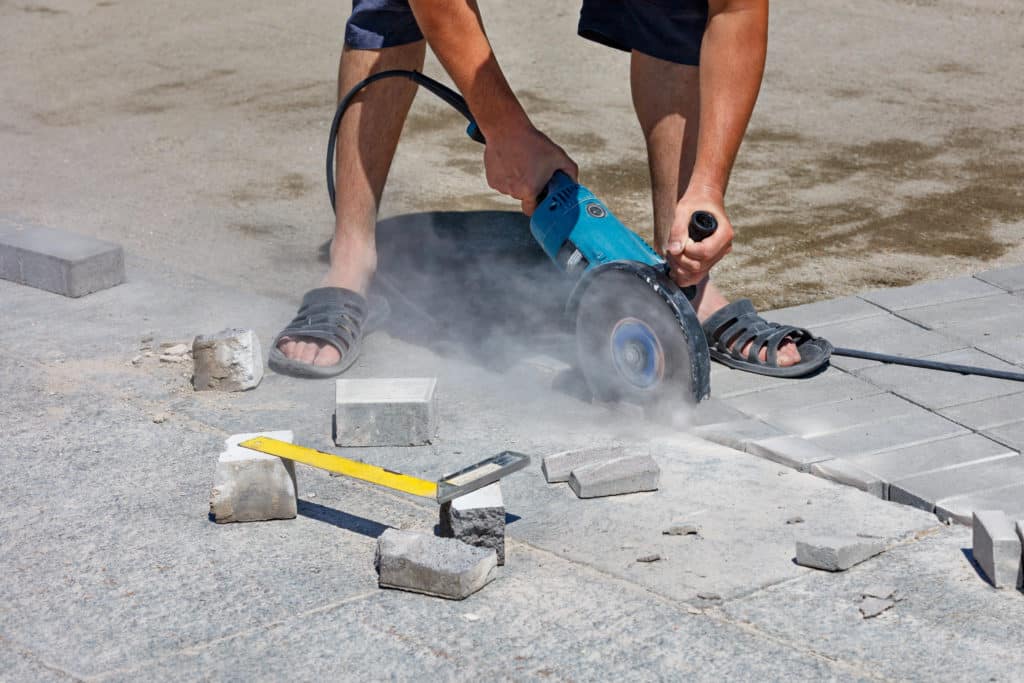
Proper repair materials and tools are crucial for effectively addressing cracks in pool decks. High-quality fillers and reliable tools ensure durable repairs that withstand the test of time and exposure to the elements.
Choosing the Right Filler
Selecting the appropriate concrete repair agent is pivotal for a successful pool deck repair. For minor cracks, a concrete sealant or epoxy can be used to create a strong bond and inhibit further damage. For larger fissures, a cement-based patching compound is often recommended for its sturdiness and compatibility with existing concrete. It’s essential that the chosen filler is capable of withstanding freeze-thaw cycles and is suitable for outdoor use to prevent future cracking.
Essential Tools for Repair
The core tools required for concrete pool deck repair are relatively simple but must be of high quality. A chisel is necessary to widen the crack slightly, allowing the filler to properly adhere. A trowel is used to smooth the filler, and a putty knife can assist with the application and leveling of the material. For cleaning the crack before repair, a wire brush should be employed to clear away debris and ensure a clean surface for the filler to bond to. Proper preparation with these tools is as important as the application of the repair materials themselves.
| Tool | Use |
|---|---|
| Chisel | To clean and widen cracks for better filler adhesion |
| Wire Brush | For cleaning out debris from cracks |
| Trowel | To apply and smooth out filler material |
| Putty Knife | To assist in filler application and ensure level patch |
Pool Deck Repair Process

The repair of pool deck cracks is a meticulous process involving filling and patching to restore structural integrity, followed by finishing techniques that ensure a durable and aesthetically pleasing surface.
Filling and Patching Cracks
To repair pool deck cracks effectively, one first needs to clean the area thoroughly ensuring that loose debris and dust are removed. This ensures that the filler will bond properly to the concrete. It is essential to test the strength of the surrounding concrete to ensure it can support the repair material. Cracks are then filled with a high-quality concrete filler, and for wider cracks, a concrete patch compound is used. If there are any joints near the cracks, they should be respected and not covered by patching material to allow for natural expansion and contraction of the deck.
- Materials: Concrete filler, patch compound, grit additive.
- Tools: Chisel, hammer, wire brush, trowel.
- Procedure:
- Remove loose concrete with a chisel and hammer.
- Clean the crack with a wire brush.
- Apply the filler to smaller cracks, and use patch compound for larger gaps.
- Add a grit additive if a non-slip surface is required.
- Level the filler with the surface using a trowel.
Finishing and Curing
After the crack repairs are installed, they must be properly finished and allowed to cure. A concrete sealer is recommended to prevent future concrete spalling. Sealant should be applied uniformly across the entire pool deck to protect it from water penetration and freeze-thaw cycles which could lead to new cracks. The sealing process also provides an opportunity to apply a uniform finish to the entire deck surface. To ensure proper curing, the repaired area should be kept moist and protected from the sun for a stipulated period, often up to a week, depending on the products used.
- Materials: Concrete sealer, curing compound.
- Tools: Brush, roller, or sprayer.
- Procedure:
- Ensure the repair is dry and clean.
- Apply the concrete sealer to the surface evenly.
- Use a roller or sprayer for large areas to promote even coverage.
- Keep the area moist if a curing compound is not used.
Maintaining the Pool Deck
To ensure a safe and visually pleasing swimming pool area, regular maintenance practices are essential to address the natural wear and tear of a concrete pool deck and to prevent more severe structural issues.
Regular Maintenance Practices
Regular maintenance of a pool deck involves periodic resealing to protect the concrete surface from water penetration and the damaging effects of freeze-thaw cycles. Resealing should be done every 2-3 years, depending on the product used and the conditions it’s exposed to. Additionally, sweeping and washing the deck regularly can prevent the buildup of dirt that may cause surface damage over time.
- Inspect: Check for cracks or signs of wear frequently
- Clean: Keep the surface free from debris and stains
- Seal: Apply a high-quality sealer to repel water and reduce surface deterioration
Preventing Future Cracks
Preventing cracks from forming is key in maintaining the structural integrity and aesthetic quality of a concrete pool deck. Since concrete pool decks experience expansion and contraction due to temperature changes, measures can be taken to accommodate these movements.
- Joint Installation: Installing expansion joints can manage concrete movement and minimize crack formation
- Prompt Repairs: Addressing small cracks early can prevent them from escalating into more substantial structural issues
When extensive cracks or damage occur, total resurfacing of the pool deck may be necessary to restore the safety and appearance of the patio surrounding the swimming pool. This not only involves filling and sealing cracks but may include a complete overhaul of the deck’s surface.

 CALL US NOW
CALL US NOW

